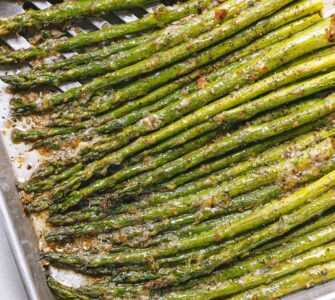In the vast and vibrant world of culinary arts, every ingredient matters, carving its unique imprint on the dish’s overall flavor profile. Among these, sumac stands out with its distinct tartness and deep red hue, often gracing Middle Eastern recipes with its presence. However, finding an ideal sumac substitute can become a quest for many, especially in regions where this prized spice is not readily available.
Understanding Sumac’s role in cooking and exploring suitable alternatives can help you maintain the integrity of traditional dishes while also encouraging culinary experimentation. This guide aims to demystify sumac, outline its importance, and present you with the best substitutes to keep your cooking adventurous and authentic.
https://rawspicebar.com/blogs/spices-101/sumac-substitute
Table of Contents
1. Understanding Sumac
2. Why Substitute Sumac?
3.Top Sumac Substitutes
- Lemon Zest
- Tamarind
- Za’atar
- Vinegar
4. Choosing the Right Substitute
5.Incorporating Sumac Substitutes into Your Cooking
6. FAQs
Understanding Sumac
Sumac is derived from the berries of the Rhus coriaria plant, which are dried and ground into a coarse powder. It is celebrated for its tangy, lemony flavor with a hint of earthiness, making it a versatile seasoning in many Middle Eastern and Mediterranean cuisines.
Why Substitute Sumac?
The reasons for seeking a sumac substitute vary. Accessibility issues may make sumac hard to find in some regions. Dietary restrictions or allergies to the spice itself can also necessitate finding an alternative. Additionally, culinary curiosity often drives cooks to explore different flavor profiles using readily available ingredients.
Top Sumac Substitutes
Lemon Zest
A Tangy Twist
Lemon zest, grated from the outer skin of lemons, offers a zesty, citrusy flavor that closely mimics the tanginess of sumac. It serves as an excellent substitute, especially in recipes where sumac is used to add a hint of tartness.
Tamarind
A Sour Powerhouse
Tamarind, with its distinct sour taste, can emulate sumac’s acidity. It works best in wet dishes where the tamarind paste or concentrate can be easily integrated, offering a depth of flavor similar to that of sumac.
Za’atar
A Middle Eastern Marvel
Za’atar, a blend of herbs, sesame seeds, and sumac, can serve as an alternative, especially in recipes that can benefit from the additional herby flavors. Since za’atar already contains sumac, it retains some of the original spice’s character.
Vinegar
A Simple Sour Substitute
Vinegar, particularly apple cider or red wine varieties, can replace sumac’s sourness in recipes. Its liquid form makes it easy to incorporate into dressings and marinades, providing a tangy flavor profile.
Choosing the Right Substitute
The choice of substitute largely depends on the recipe and the desired outcome. For dry rubs and seasoning blends, dry alternatives like lemon zest or za’atar might be more suitable. For marinades and sauces, tamarind and vinegar can provide the necessary liquidity and acidity.
Incorporating Sumac Substitutes into Your Cooking
Experimentation is key when substituting sumac. Start with small amounts, gradually adjusting to taste. Remember, each substitute brings its unique flavor profile, which can enhance the dish in different ways.
FAQs
Q: Can I use lime zest instead of lemon zest as a substitute? A: Yes, lime zest can work as a substitute for sumac, offering a slightly different but equally tangy flavor profile.
Q: Is there a difference in using fresh vs. dried tamarind as a substitute? A: Fresh tamarind tends to be more sour, while dried tamarind can have a sweeter undertone. Depending on your recipe, you might prefer one over the other for a closer match to sumac’s flavor.
Q: How do I substitute vinegar for sumac in dry rubs? A: For dry rubs, consider using a dry form of acidity like lemon zest or tangy sumac-based za’atar instead of vinegar to maintain the dry consistency of the rub.


















